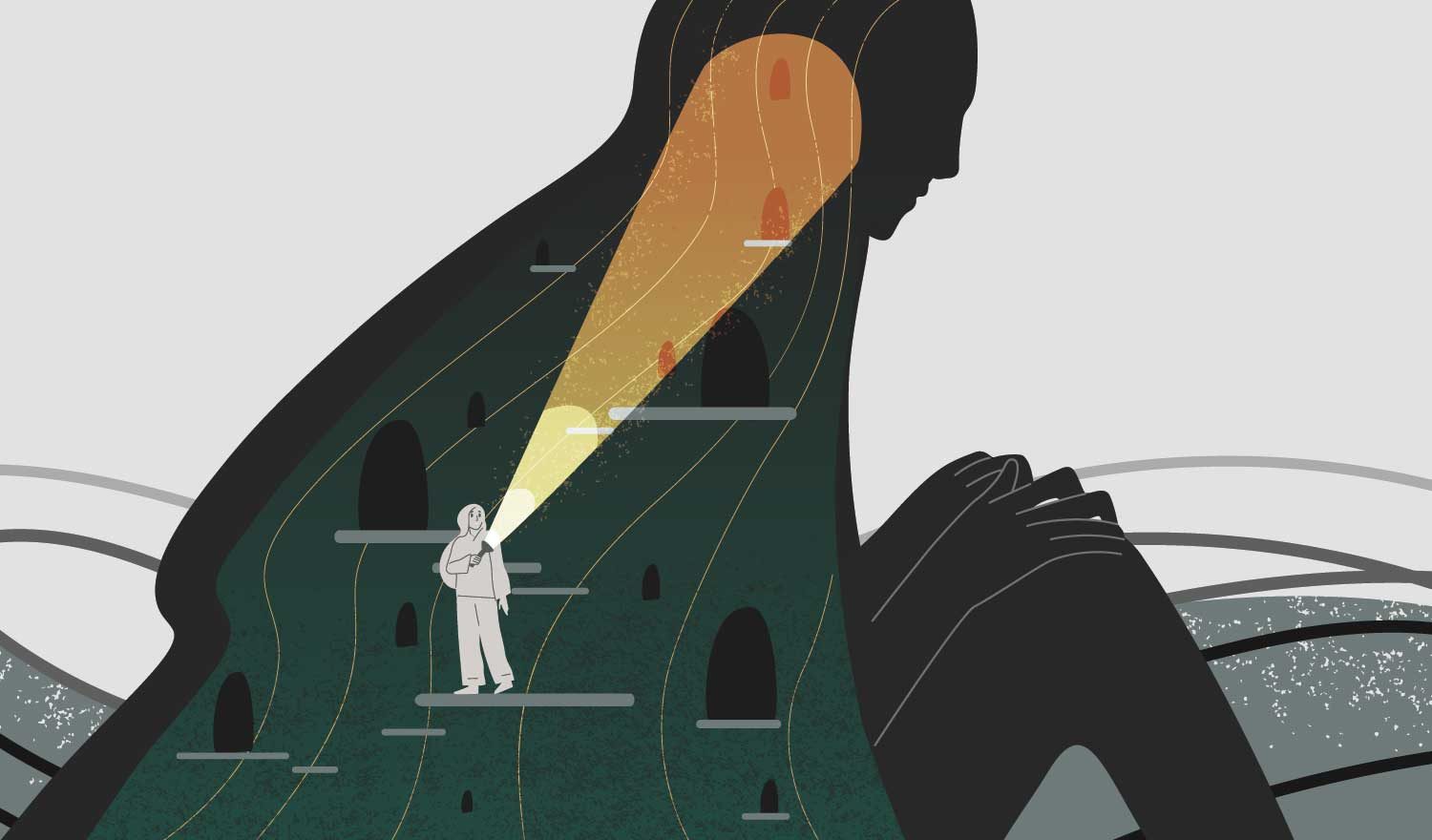How to Deal With Stress
Learning how to deal with stress can feel overwhelming when you are unsure about the first step. If you want to start changing your inner world of thoughts and emotions through your unconscious beliefs, there is one thing I advice you to take a good look at: How much of your day do you spend in a stress response? How do you currently deal with stress? I want to talk about why it’s important to break the stress cycle if you want to make sustainable changes, and show you examples of how you can do that.
Dealing With Stress is Unavoidable
Stress is not bad. It’s when we don’t know how to deal with stress that can cause problems. It gives signals to your cells to step it up. A training session that pushes your limit is a form of stress to the body that gives it a boost – to grow more muscles, for synapses to fire faster etc. The stress response helps us accomplish things we might not have been able to do otherwise. Run faster, lift heavier, get ourselves to safety. Stress in itself is not bad, it actually helps us grow. It’s when it becomes a chronic state that we run out of fuel and tire ourselves out. And get stuck in the stress response loop.
How to Deal With Stress: The Stress Response Loop
What’s tricky about the stressed state is that it is feeding itself information and call on other parts of the system to go into stress. It might start with a thought: “I won’t make it in time”. Now your body is tightening up and you start walking faster. Walking faster sends the signal to the nervous system that you are in an urgent situation, it will start sending out hormons of cortisol and adrenalin. You start feeling the urgency and stress in your body. Now your emotions start respond to this state. You FEEL stressed, threatened.
Then add a layer: self judgment – which makes dealing with stress even more emotionally complex. “If I just had left home earlier” or “Why am I always late?”
Cue emotional response of feeling like a failure. Nervous system immediately responds with sending the signal to the body, and we tense even more, hunching over and closing the area around our heart from the emotional pain.
Do you see the loop? How all the different parts are reinforcing each other so that it feels absolutely true, and how it’s creating more of the same experience?

The activation can happen from any of the parts – emotion, body, nervous system or thoughts – and sometimes we notice HOW and WHEN it gets activated, but a lot of times it happens in our unconscious. Our nervous system picks up on something in our environment. Something that sparks the memory of a traumatic event or a smell that our brain has related to a humiliating situation.
When we get stuck in the stress response loop we interpret everything around us as a threat to our safety. “Oh no, I’m going to be late!”, “Why can’t she do what we agreed on??” or “They must think I’m stupid” becomes statements with a lot of emotion and charge to them that then fires the other parts of the loop and keeps us there.
When your body is in a stress response it’s all about survival. The brain shuts down any other processess that it can afford to wait with. There’s not really any room for luxuries like processing emotions, changing unconscious beliefs, learning, growth, rest, repair and cell renewal OR accessing other brainwave states.
How do we deal with stress? We break the stress cycle with the help of your physical body
If this is you and you want a way out of the stress cycle, then you need a way to stop the loop and relax out of your sympathetic nervous system.
The hack to stop the stress response and get you out of the loop, is to access the other systems (thought, emotion, nervous system) through your physical body. It’s the easiest to access in moments of stress and you always have it with you. It’s more hands on and concrete than trying to shift your thought patterns when you feel threatened and unsafe.
In moments of stress
Let’s look at three practical steps that help you shift a stress response once it has started.
- Awareness
Notice that you are in a stressed state. You can get the clue from the kinds of thoughts you have, what kind of emotions are moving through you or how your body is feeling. - Slow down your breathing
There are numerous breathing techniques but the key in moments of stress is to keep it simple.
Start by taking equally long in-breaths as out-breaths, 5-6 seconds each, for 3-5 minutes.
Now that you have calmed your system some you can move to number 3: - Relaxing your body
Do a quick scan and notice if you’re holding any unnecessary tension.
Are your shoulders by your ears?
Are you tensing the muscles in your jaws?
Are you tightening the belly?
Use your breath to relax these parts.
By doing an intervention like this, and not letting your system run too deep into the stress response, you start building new neural pathways and creating options for the system to go somewhere else than into stress.
When doing this you practice: awareness, body sensing, agency over your state of consciousness and self-regulating. So it might seem small, but practicing this really makes a difference – both in the situation itself and in the long run.
If you want to learn and practice a relaxation breathing technique, I’m offering a free guided meditation that you can download here, together with a guide on how to overcome resistance with meditation.
In everyday life, build resilience to dealing with stress
Next, let’s look at some things you can do to let your system relax, rest and recover, even when you’re not in an immediate stress response.
- A shorter relaxation practice every day
- A longer relaxation practice a few times a week
- Slow down – walk, work, talk, do the dishes slower
- Focus on your breathing throughout the day
- Connect with nature
- Cuddle – with another human or a pet
- Take a bath or get a massage – enjoyment
You will notice that practicing this will have an impact on your reaction in stressful situations. Remember: you are shifting activity from one part of the brain to another, and practice will lead to new patterns.
Look at this list as examples that you can pick and choose from. Don’t try and do everything, make change in feasible steps. But there’s no way that you are too busy to fit one of these in your day, because you are always carrying your body around! Have you noticed you are breathing anyways, at the same time you’re doing all your daily tasks? All you need to do is shift your attention to it. Practice relaxation breathing in your car going to work. Set the alarm to do a 2-minute breathing every hour. Schedule things that your body enjoys doing, like getting a massage or taking a bath.
In my free breathing relaxation meditation that you can download here, you can learn how to relax your body with your breathing.
Shift out of stress indefinitely
What I’ve focused on in this article is practices to take you into states of relaxation through the physical body, but I want to mention this deeper layer so it’s not overlooked.
My all time favorite ways to deal with stress and to change stress and tension for good:
- Take apart beliefs that activate emotional stress
- Release stored emotions
- Process and heal trauma
Like we do in the self mastery work: go look at the underlying beliefs that cause you to go into a stress response. Once the beliefs are seen and shifted, the rest of your system can follow along. The root for moving into stress and anxiety is gone. But the catch-22 is that you have to learn how to relax BEFORE you can make major changes to the unconscious so the previously mentioned practices is where you need to start.
If you’re interested in learning the self mastery work, you can:
- try out the four free lessons at pathwyatohappiness.com
- book a private coaching with me
- put yourself on the waitlist to learn self mastery work with me online.
There can also be reactions from the belief system about relaxation – it might not feel safe to relax. Make sure that you are in a safe environment and set it up so you can help the system relax as you keep practicing. But if this is you, looking at the underlying beliefs, or even processing trauma might be what you need.
My experience on my own journey was that some stress patterns were still stored in the body after changing the belief system, so my body needed support in letting those go and learning new patterns. Movement, Somatic Experiencing, Feldenkrais, Cranio Sacral therapy are some of the techniques that I’ve tried and that help you do that.



